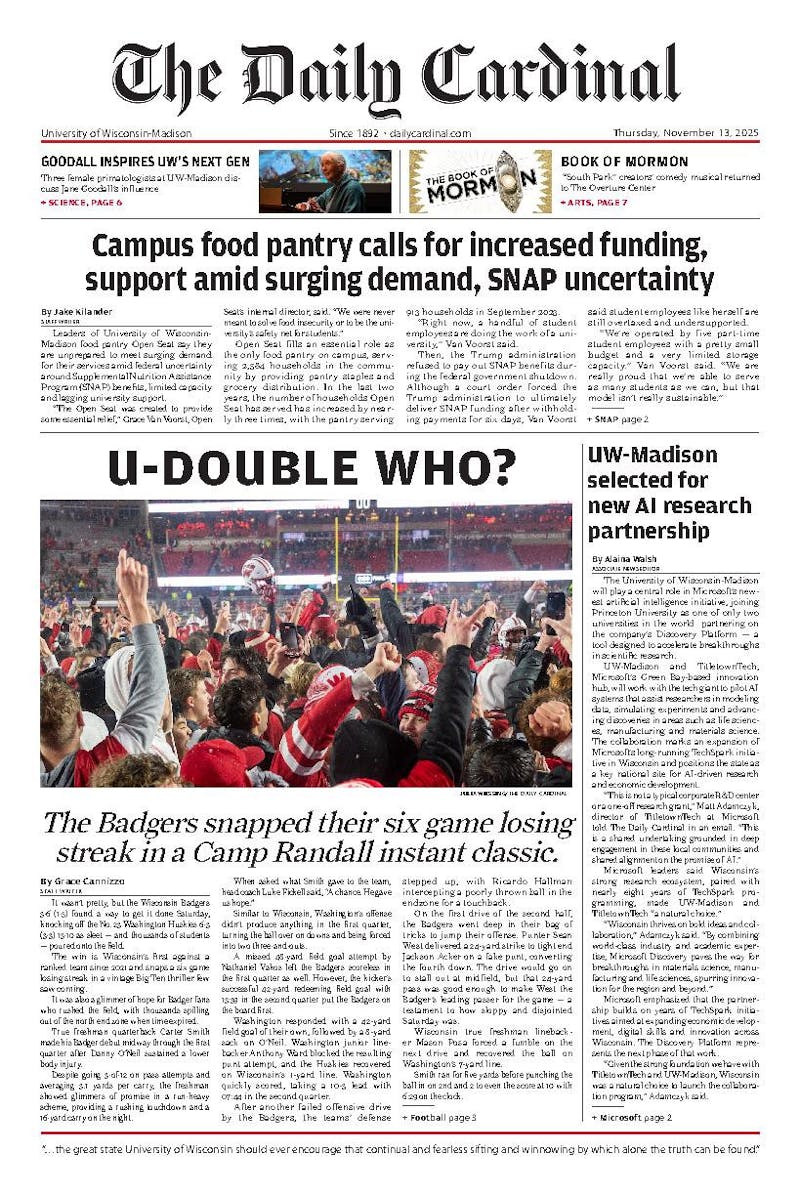Sam Frank, the head of the University of Wisconsin-Madison startup Realta Fusion’s theoretical physics team, Kai Shih, a Realta scientist, and Aaron Tran, a UW-Madison postdoctoral researcher, have spent years designing a model that shook up the order of the fusion world.
The team of researchers collaborated to build a computer model for their magnetic mirror fusion device prototype Wisconsin High-temperature-superconducing Axisymmetric Mirror (WHAM), demonstrating control of plasma instabilities and catching their simulations up with 40 years’ worth of research into other fusion designs. Overall, Realta’s scientists said the project has pushed them forward in the fusion race.
The magnetic mirror’s golden age
Nuclear fusion, which works by smashing two hydrogen-based atoms together in hot plasma to create a high-energy output, is a promising option for an increasingly energy-hungry world: the technology is clean and can theoretically produce a massive amount of energy from low levels of starting material.
The magnetic mirror is one of a subset of fusion designs that use magnetic fields to create the hot conditions necessary for fusion, consisting of two mirrors on the ends of a cylindrical metal tube. Energy injected into plasma within the tube bounces back and forth between the mirrors.
WHAM is a simple magnetic mirror, but Realta's prototype Hammir will be a tandem mirror, containing a third mirror in a “central cell.” The two end mirrors will be kept at a high energy density, preventing the lower-pressure central cell from “leaking” plasma.
Though the two mirrors on the ends of the cylindrical design act as plugs for plasma confinement, they also perturb the design’s magnetic field, creating drift-cyclotron loss-cone instability. To explain this, Frank compared plasma to a body of water that can “ripple” when perturbed, creating waves that knock particles out of the device.
“What these waves will do in the drift-cyclotron loss-cone mode is take energy out of the particles that are in your plasma, and knock them out of your mirror, and grow,” Frank said. “They will continue to grow and get bigger and knock stuff out, and eventually you'll have no plasma left.”
In its first plasma confinement experiment with WHAM, Realta demonstrated the highest magnetic field in the history of fusion research, 17 Tesla, showing the device’s potential for higher-temperature experiments.
But where there existed 40 years of instability simulations for tokamaks, Realta’s magnetic mirror configuration essentially started from a computational blank page, according to Frank. Drift-cyclotron loss-cone instability only occurs when plasma is hot enough to support fusion — hotter than in current experiments with WHAM.
Researchers have known drift-cyclotron loss-cone instability could occur since the 1960s, but Realta was able to model this instability in a 3-dimensional computer simulation for the first time.
The simulation showed that by introducing tactics to control the instability, WHAM could confine plasma for around 100 microseconds. Though this number is still lower than the “ideal” 0.1 to 0.2 seconds of confinement time, the researchers remain hopeful that simulating more control methods will allow them to close the gap.
The team behind Realta’s innovation
Shih, Frank and Tran all worked together to build the computational model. Frank is an author of both papers published in August, Shih is an author of the August paper on plasma confinement and Tran is an author of the August paper on drift-cyclotron loss-cone instability.
Shih is originally from Hong Kong and traveled to the United States for a PhD in fusion at Stony Brook University. After 10 years in New York, he moved to Madison to work at Realta.
“I've always been interested in fusion,” Shih told The Daily Cardinal. “From a young age, I already felt like fusion is an unsolved problem that our generation of scientists has the responsibility to tackle.”
Shih’s work bridges Realta’s theoretical and experimental groups: his job consists of “translating the physics into computer code,” he said. One of his responsibilities is running an internal plasma diagnostic. Optical sensors record pictures of plasma during experiments, and Shih wrote code that performs an image “reconstruction,” allowing Realta’s scientists to examine the plasma’s properties.
Frank, whose impetus for going into fusion was childhood TV shows and books, studied physics at the University of Michigan and completed a PhD at MIT before he joined Realta. He enjoyed the challenge of developing the magnetic mirror simulation “from scratch” using results from the tokamak and stellarator, more highly researched nuclear fusion topologies.
“We can build on a lot of the things that were learned from the tokamak and the stellarator to do it better and faster than they did it originally,” Frank said. “That has been a really fun problem. Here’s a clean slate: how do you go and build a simulation program for this device that nobody's ever really tried to build a simulation program for before?”
Tran, on the other hand, described his journey into the field of fusion as “more meandering than average.” He studied geophysics at the University of California-Berkeley, then completed a PhD in astronomy at Columbia University in a group that incidentally conducted research in plasma physics. Two years ago, he started a postdoctoral position at UW-Madison, not originally knowing what project he would work on.
“It worked out that my skill set in computer simulations, that led to this paper, slotted in with the WHAM group,” Tran told the Cardinal. “I was able to get started more quickly and contribute something a little different than what was already being done, and what was already possible.”
Tran worked on the 3-dimensional physics-based simulation of a magnetic mirror for around a year, saying he received the “seed” of the idea from a group of researchers at Los Alamos National Laboratory.
“Because I was able to focus on [the simulation] almost full-time for about a year, we were able to work together to incorporate more realistic physics [and] couple multiple codes together,’’ Tran said.
The team’s process involved identifying the “real-world physics” problem to model and selecting variables and equations necessary to fully “describe [the problem] using computer language,” according to Shih. Compared to the tokamak and stellarator, Tran said the magnetic mirror had “a clean, simple geometry” that made it easier to model.
Once the team created a draft of the code, they “iterated” it by comparing it to a synthetic scenario with a known expected result — a process called benchmarking.
In the future, the team plans to “validate” their model, comparing it to more extensive, current experimental data from WHAM.
Tran said each member of the group relied on others’ expertise to create the magnetic mirror model.
“I came from a different field, but I brought some expertise in kinetic physics to understand this instability,” Tran said. “Sam worked on tokamaks, rather than mirrors, before, but then he had that broader context of what is going on in the fusion land and how to draw analogies [between] what was learned there and what we had to learn from the mirror.”
Together, Realta’s team of researchers brought what Tran called the “long-burning societal moonshot” of fusion a bit closer to reality.
“I think it's an exciting time to be in this field,” Tran said. “There's interest from graduate students, undergraduates, young people. The Department of Energy and investors are willing to fund [fusion].”
Frank and Tran both credited UW-Madison’s fusion environment for making their research possible.
“If I were an independent person, I wasn't a postdoc, I was just someone sitting in their house and sending off random emails to scientific publishers, I could have never done this myself,” Tran said. “It was only possible because I was here in this ecosystem.”
Editor's note: This article was edited at 2:46 pm on October 2 to clarify that WHAM is a simple mirror, not a tandem mirror.






